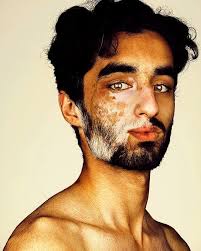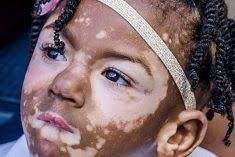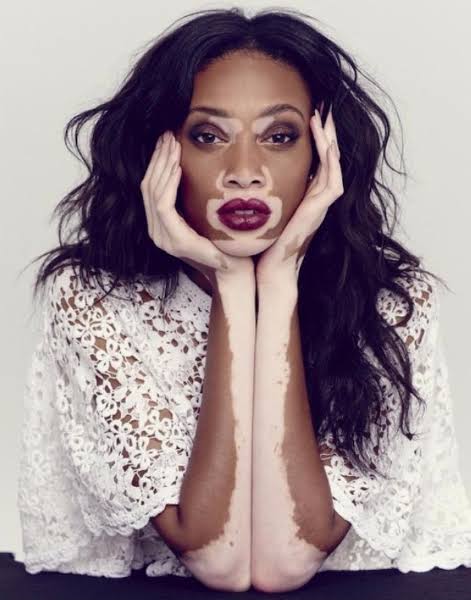Be yourself. No not like that.
They will like you as you are but please, don’t smile like that.
Change that. No one likes people that act that way.
Every day, we are forced into boxes.
Forced to act and look a particular way. They dub it being agreeable; being perfect.
Perfection becomes a milestone that everyone tirelessly strives to attain at all costs.
So we learn to smile prettily, to hide our fears behind artfully crafted facades.
We learn to hide our flaws and shortcomings behind makeup, savage retorts and haughty airs, all in a bid to somehow fit into that perfect mold.
We learn to hide our humanity behind filters and cheeky monikers and fire at anyone that shows even the least bit of imperfection.
This is the world we live in and in this world of pseudo perfection, Vitiligo, with its discolored skin, has no place.
Vitiligo

Vitiligo is a skin disorder that causes uneven loss of skin color in different parts of the body. Vitiligo affects people of all skin types and races, but it is more obvious in dark-skinned people due to the sharp contrast between affected skin and normal skin.
It can also affect the hair, the insides of the mouth and the eyes. Its intensity and associated rate of color loss cannot be predicted. It often starts manifesting before the age of 20.
Symptoms
•Random patches of depigmented skin.
•Premature whitening of eyelashes, beards, eyebrows and hair on scalp.
•Loss of color on the insides of the nose and mouth.
•Change of retina color.



Causes
Vitiligo occurs when melanocytes (cells that produce pigment) stop functioning or die. When this happens, the affected parts of this skin gradually turn a lighter color due to the discontinued production of melanin.
Melanocytes may stop producing cells due to:
•A disorder in which the immune system attacks melanocytes.
•Heredity.
•Trigger events (exposure to chemicals, stress or sun burn.)



Vitiligo may be:
•Generalized with patches occurring all over the body.
•Segmental with patches occurring at only one side of the body.
•Localized (focal) with patches occurring on one or few areas of the body.



Vitiligo has no cure and while some avant-garde treatment options are in the works, there are a few options that can be applied in order to manage the situation.
•Pigment removal from unaffected areas.
•Medications (ointments containing tacrolimus or corticosteroid creams)
•Hiding discolored skin through the artful application of makeup and self-tanners.
•Light therapy
•Tattooing
•Surgery



Unfortunately, some of these treatments can have some debilitating side effects like itchy and dry skin, scarring etc.
Alongside the other health implications vitiligo can bring (skin cancer, eye problems, hearing loss etc.), there is the problem of social and psychological distress.



People, especially children and teenagers, living with vitiligo are constantly picked on and made fun of due to their somewhat different skin color. While makeup and some other treatments can hide the physical manifestations of this disorder, it does nothing to the psychological trauma most vitiligans feel.
This ultimately results to low self-esteem, lack of confidence and intense depression. A typical example can be seen in Michael Jackson’s case.
Micheal Jackson



The king of Pop. Asides his fabled moonwalk, beautiful voice and music hits, Micheal was known for his uncharacteristically white skin. Back then, everyone thought he was embarrassed about being black and hence, was undergoing procedures to look like a Caucasian but that wasn’t the case.



You see Michael had Vitiligo. When he started battling the disorder sometime around the release of Thriller in 1982, he would hide the white patches behind a glove or with makeup. As time went on, the change became more drastic and makeup wasn’t enough.
In the video below, Micheal, in an interview with Oprah gives a little insight on his condition.
 
A saddened Michael tries to explain a condition that he doesn’t really understand but subsequent happenings show the public’s disbelief.



Later in his life, Michael started using Benoquin creams to manage the situation. Michael also had Lupus and this worsened his vitiligo and made him lose pigmentation faster.
The late icon’s case is a good example as to why the public, particularly here in Nigeria, needs to be educated on vitiligo and the need to show that vitiligans, people living with vitiligo are normal people too.
But it is not all grey clouds and sad stories with this disorder. Many people living with vitiligo are making huge impact on a global scale and being the best they can be each day. Notable among them is Winnie Harlow.
Winnie Harlow



Harlow has to be the most popular vitiligan alive. Thrown into fame after contesting for the 2014 edition of America’s Next Top Model, Winnie Harlow is one person that hasn’t let her condition get the best of her.



From being a supermodel to being featured in top blogs and magazines like Vogue and Cosmopolitan, she has proved that just like normal skin, skin with vitiligo can walk international runways and make resounding breakthroughs in the fashion world.
People need to be made aware of this disorder, what causes it and the physical and psychological implications.
They need to understand that people living with vitiligo are people with talents, hopes and dreams too and as such deserve to be treated with dignity and respect.
We should learn to see beyond little physical differences because at the end of the day, we are all humans on the same soul-searching journey.



We’re all the same irrespective of skin color or tribe or religion ..we’re one because we belong to one race.